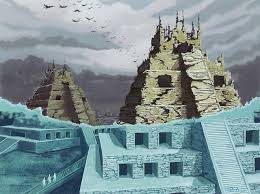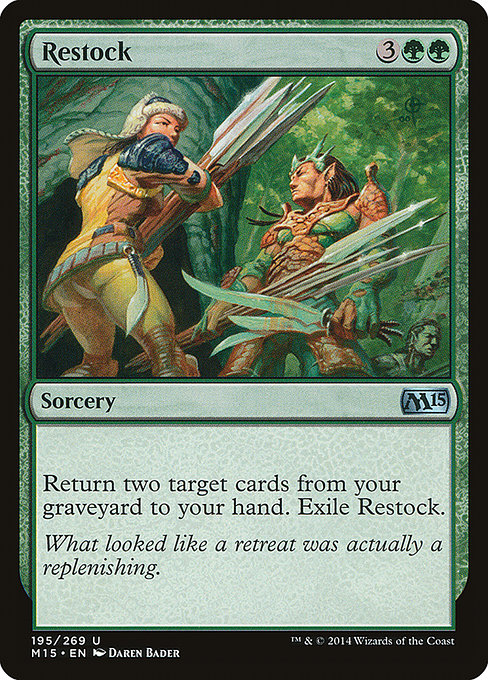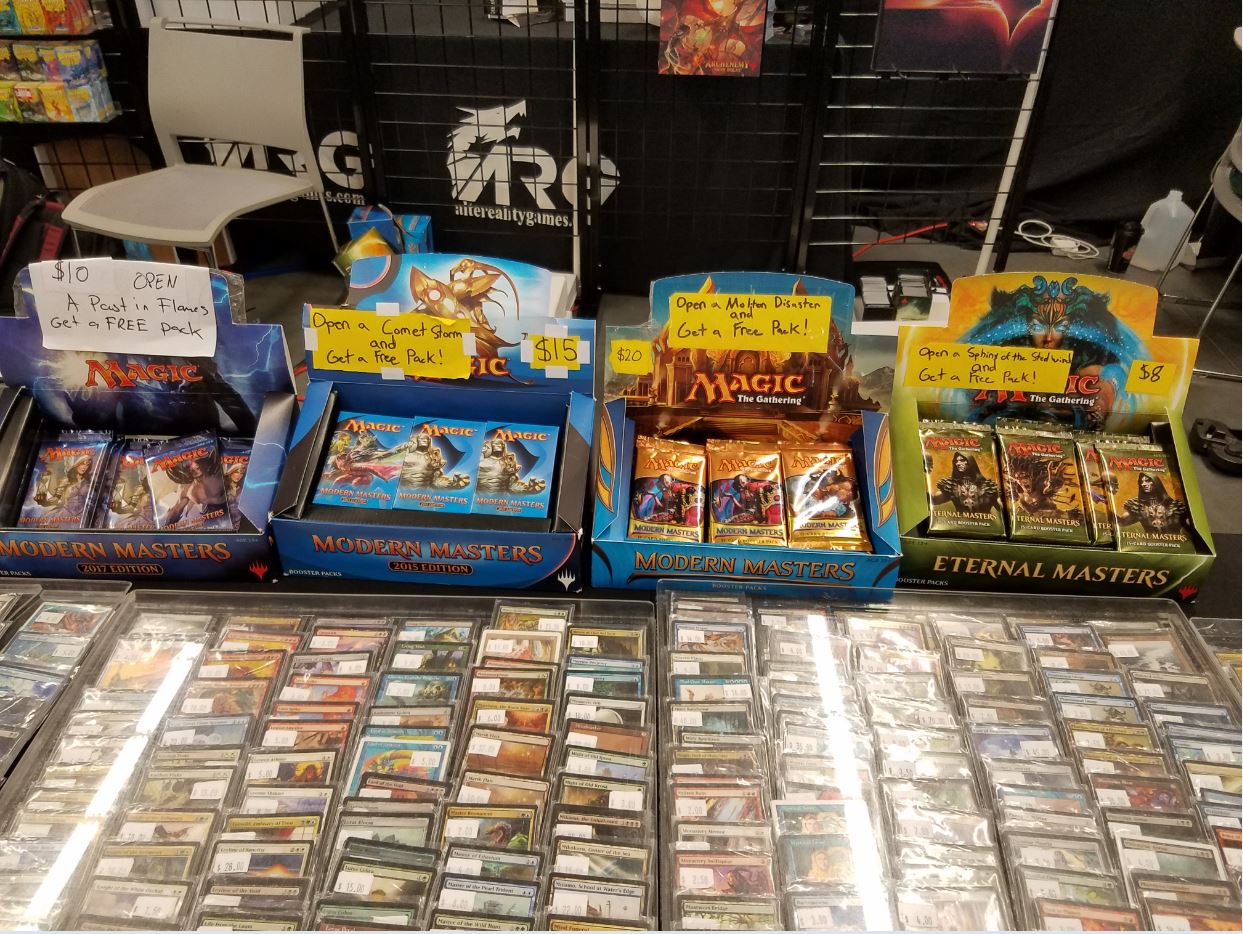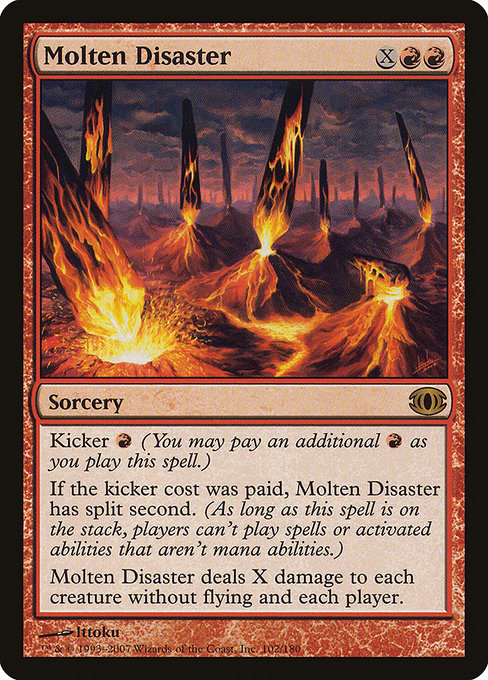Are you a Quiet Speculation member?
If not, now is a perfect time to join up! Our powerful tools, breaking-news analysis, and exclusive Discord channel will make sure you stay up to date and ahead of the curve.
Quiet Speculation is excited to welcome Morgan Wentworth to the team! She’ll be writing weekly articles, recording videos, perhaps doing some streaming, and joining the QS Cast as a third host. She's a level-two judge and writes for Gathering Magic as well, so keep an eye out for her work here and elsewhere!
As a Magic player who enjoys travelling to Grand Prix, I can always count on the presence of a convention hall staple: the row of large booths featuring all the vendors there from open to close to sell you cards. However, seeing them only as purveyors of binders full of Modern cards or five-row boxes with “50¢ rares” scribbled on the side is a huge simplification of their function within the community and the reasons they show up to your local Grand Prix.
Watching a booth get set up and especially getting torn down is like watching the gears in a clock. Everything fits into sometimes-tiny spaces, everything looks like it was meant to be there, and yet each booth has a distinct look to it: Cool Stuff, Inc. has its wares displayed, not in cases, but in a neat array of images printed onto a large piece of table-covering paper, complete with sell prices. Pink Bunny Games has employees in distinctive uniforms. RIW Hobbies has several five-row boxes of dollar-or-less cards for sale filling up an entire side of their booth. Power 9 will include the score of Packers games in the projection above their booth. Vendors will come with an assortment of essentials for the players at the event, from sleeves to format staples, as well as valuable or unusual cards and sealed product.
Seeing all of the stuff that comes with a vendor getting unpacked on Friday morning can lead to the assumption that their goal is to get rid of it at the end of the weekend. While a vendor may not mind finally unloading a Japanese Duel Deck: Izzet vs Golgari or a box full of bulk foils, this is not the primary reason to get that space at a Grand Prix. While most booth setups vary in significant ways, there is one similarity to be found at all of them: a couple of chairs set on the customer side, usually positioned in front of buy mats and laptops.
A player might see selling cards to a vendor as a way to fund their trip. Maybe one is hoping to take advantage of a lucrative trade-in bonus to snag sought-after cards. Or perhaps selling to a vendor is a way to vent one's frustration at losing every. single. win-and-in. with this stupid. Abzan. deck – I’m just going back to Burn, guys!
Anyway.
Selling product is a secondary goal for most vendors at an event. Rather, most of them will come with thousands of dollars in cash and only consider the weekend a success if they can use it all to buy cards. Vendors, especially those who shell out to get a spot at a GP, usually have websites and even brick-and-mortar stores where they can sell the cards that they buy from you, so it pays to purchase as much as possible when attending these events. Consider this: there’s a good chance that the Power in the case is meant to entice someone with a choice enough binder to trade in for it.
Vendors compete with each other for cards and customers at GPs, which leads to cool innovations that benefit players and then get spread to stores. Talking to a few of the folks who were at GP Cleveland gave me the impression that it was more than just a numbers game, though. As people who spend time on both sides of the tables, vendors really care about the players and their experiences at GPs. They get that for many people who attend, this may be the one time they are in a place with over one hundred Magic players concurrently, and really get into the spirit of “specialness” that results, right down to the quintessential Magic experience: pack cracking.
At the ARG booth, I talked to an employee named Tony Buccioni about the booth’s policy with packs from the Modern Masters series. Each of the three iterations of Modern Masters as well as Eternal Masters has featured a disappointing rare or mythic rare. For Modern Masters, it’s Molten Disaster, Modern Masters 2015 had Comet Storm, Eternal Masters featured Sphinx of the Steel Wind, and Modern Masters 2017 touted Past in Flames.
While I am happy to draft any of these cards (except maybe Past in Flames, which is difficult to make work in Limited), value-wise, the average price is about $1, and in the mythic slot, these could have been something like Tarmogoyf or Snapcaster Mage. So this is cool: ARG promises a free additional pack to anyone who purchases a pack from them and opens one of these cards.
“Molten Disaster was such a bummer to open out of such an expensive pack,” Tony told me. It’s not all about the value, though: “A guy yesterday opened Aether Vial and a foil Molten Disaster.” He got his money’s worth from the pack, but he still got that free pack. It’s the principle of the thing.
Personally, I like the policy because it incentivizes people to open their packs at the stall, and there is little I enjoy more than watching someone open packs that cost $10 or more. As I was talking to Tony, a player bought a Modern Masters pack and a Modern Masters 2015 pack. You can bet I added what he opened to my notes specifically to report them to you – unfortunately for him, he opened a Pyromancer's Swath and a Wolfbriar Elemental as rares, with unremarkable foils.
I like to use new sleeves whenever I play in a competitive-REL event, and as a judge, I advise you all to do the same. Naturally, I shopped around for Dragon Shields. Depending on the store, the retail price tends to be around $10. However, at GP Cleveland, the price tag was anywhere from $8 to $11. In my retail experience, a significant markdown generally doesn’t increase sales, so I asked an employee at one of the booths selling Dragon Shields for $8 – Fodder Cannon Games – what the deal was. Jeremy Tomacooper, the event coordinator and lead TO sales rep there, laid it out for me. “Most vendors price up going to GPs. We wouldn’t be here without the players, so our philosophy is to give back.” I could see his point. Having an extra $2 for post-GP drinks is something I am always grateful for.
Another important function that vendors play, and one that most players might never come face-to-face with, is supporting the tournament organizers by paying for their spots. Having a row of vendor booths along one wall of a convention center hall represents a portion of the cost of the hall that players don’t have to cover through their already-rising entry prices.
I know many vendors from a long time of running in the same tournament-organizer circles, and I tend to recognize the same faces at every event. If you attend a lot of these events, there's a chance to build relationships with cool people that could really help you out with your Magic purchases and sales. And remember, vendors are important to making a Grand Prix what it is. If you attend one of these events, be sure to take advantage of the offers and opportunities presented by having many competing dealers in one place.












Welcome to the team, Morgan! Excited to have you aboard. Look forward to your content! 🙂
I love reading stories like this. I would encourage you to make them more personal. Knowing many vendors from a long time might bring some very interesting stories and insights for our readers.
Thanks for sharing and welcome to the QS team!